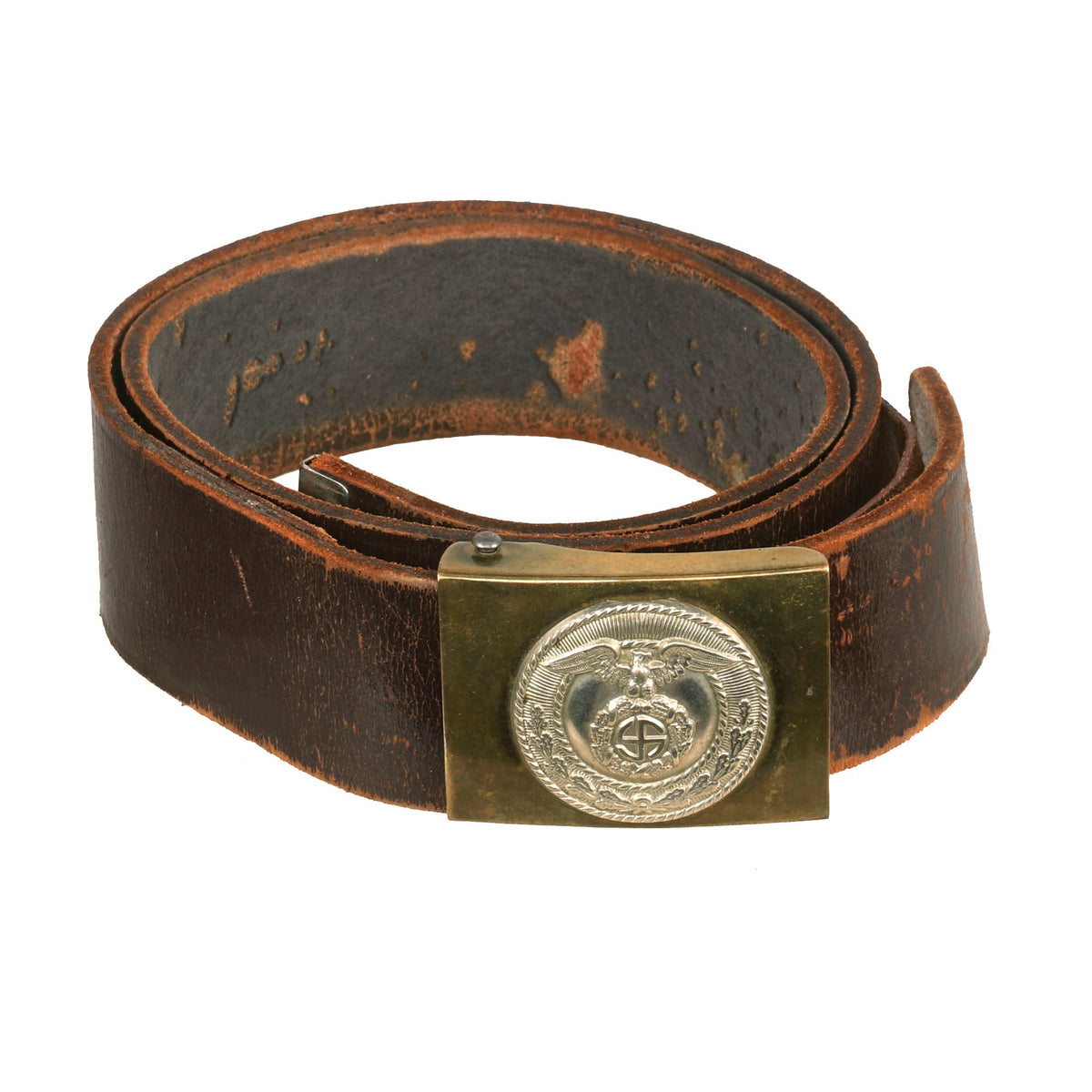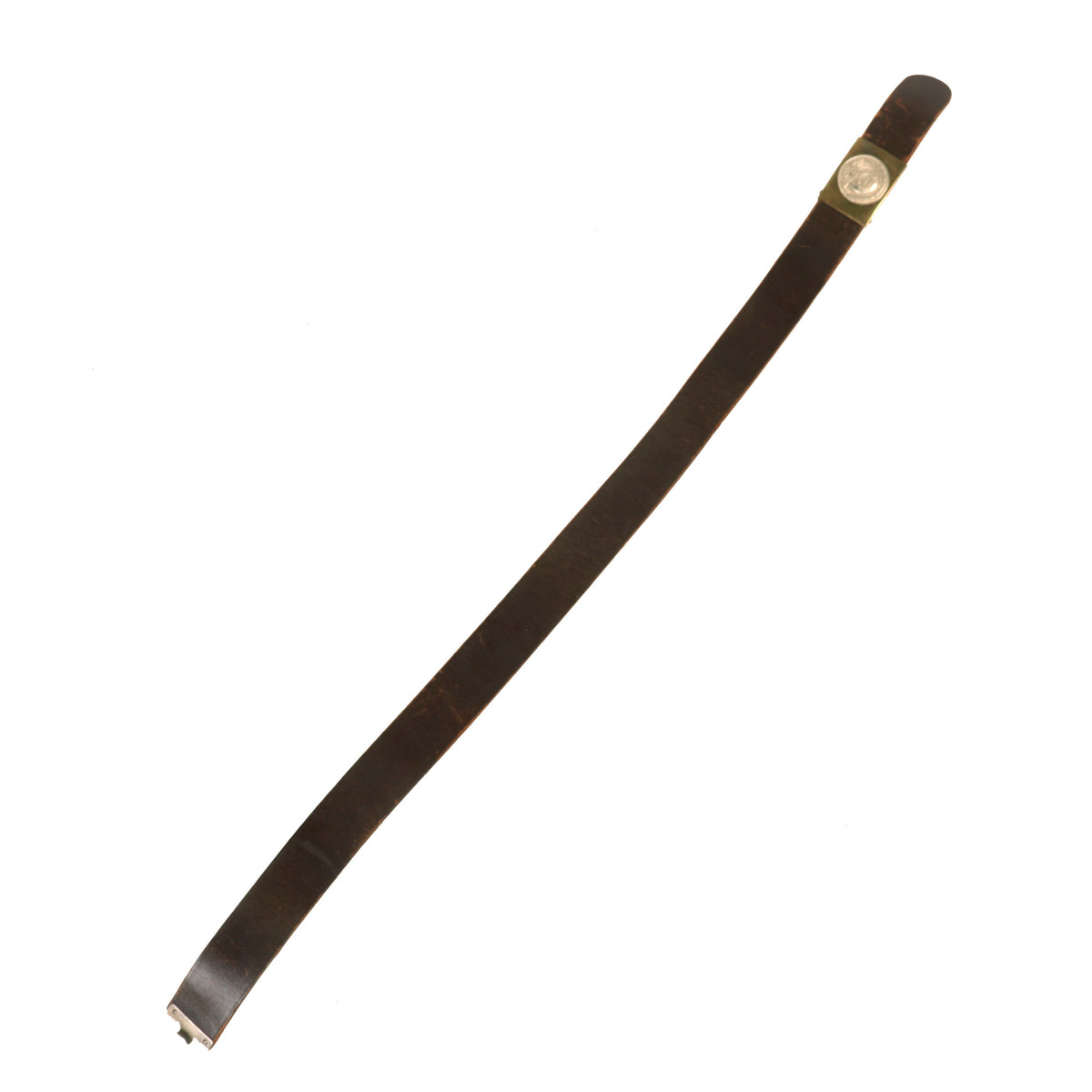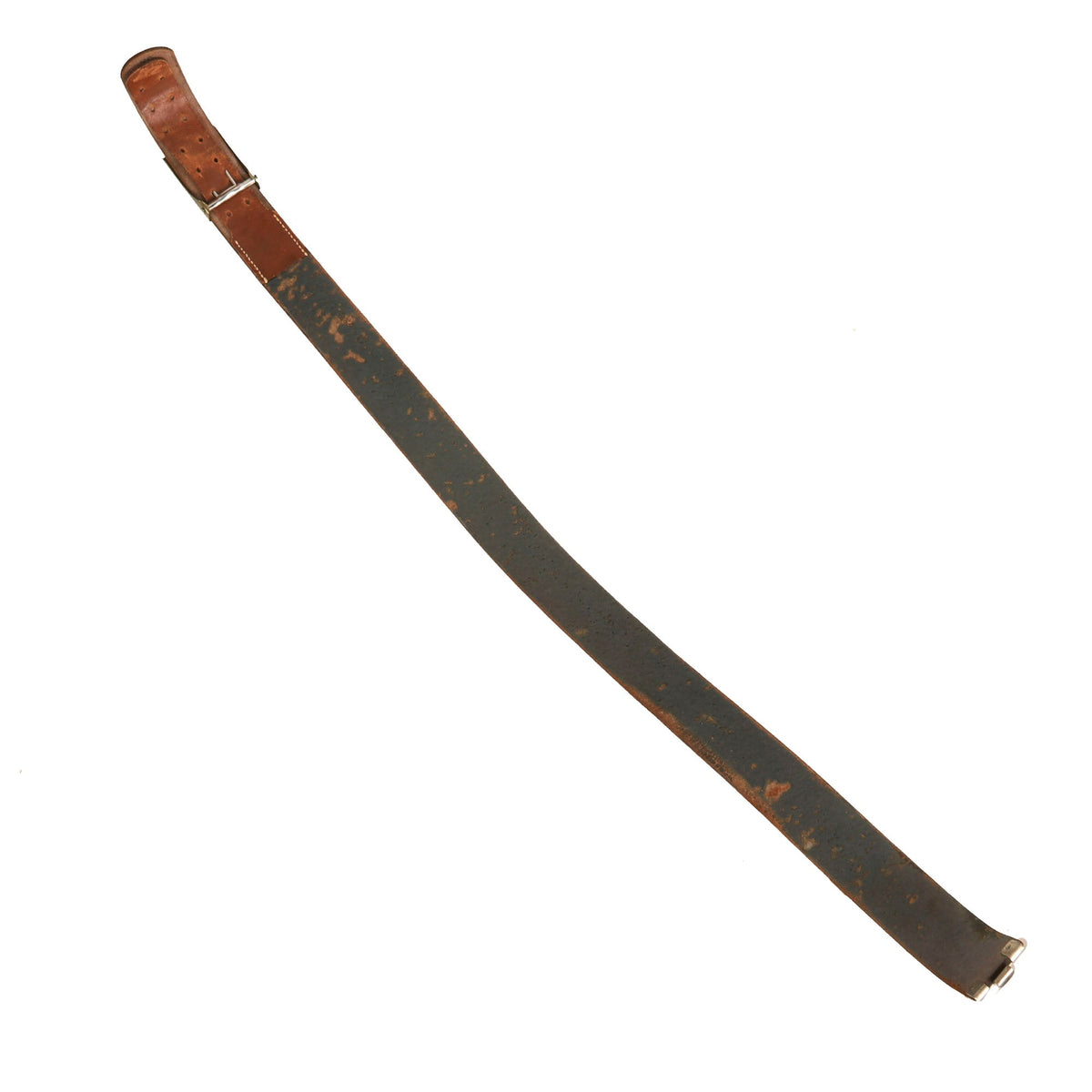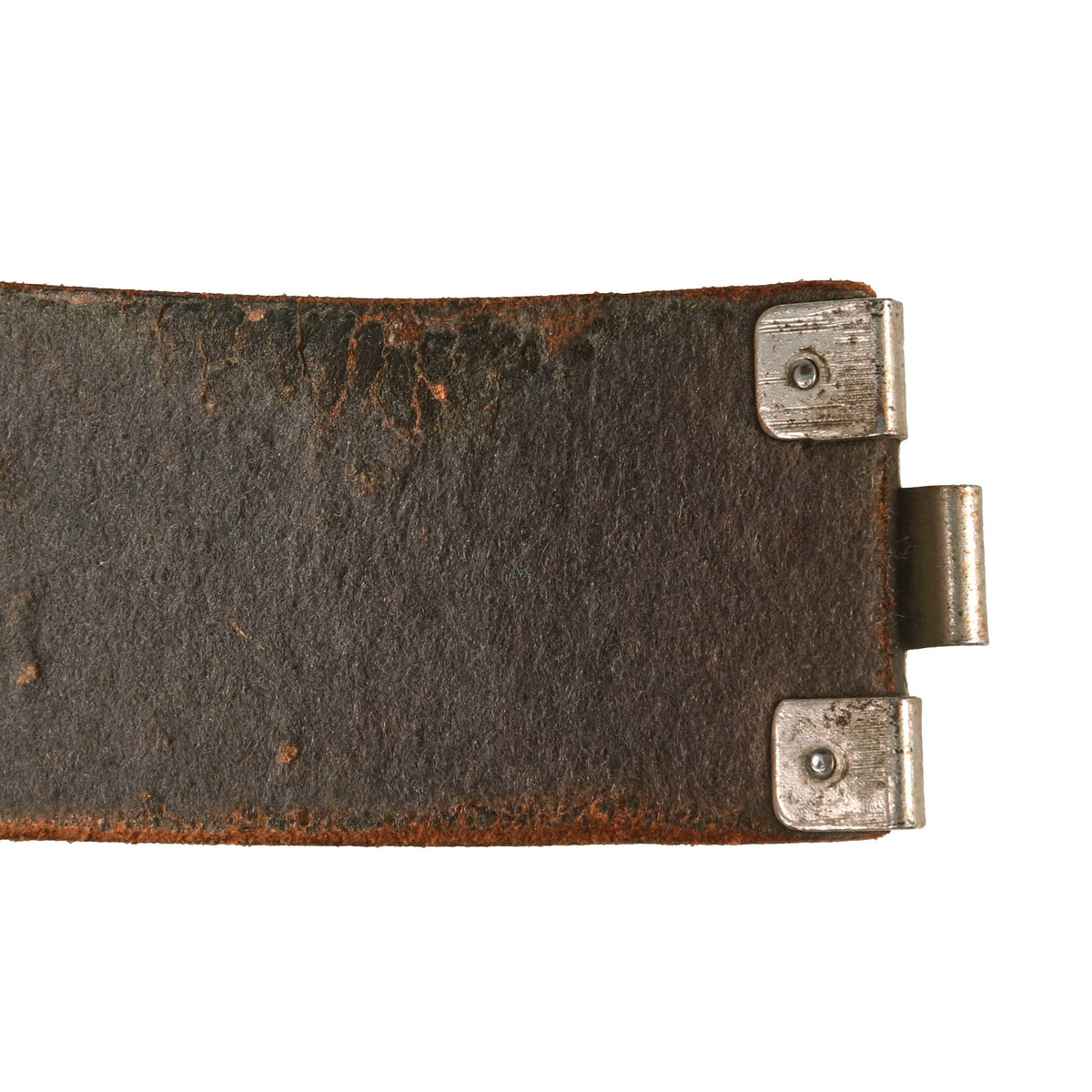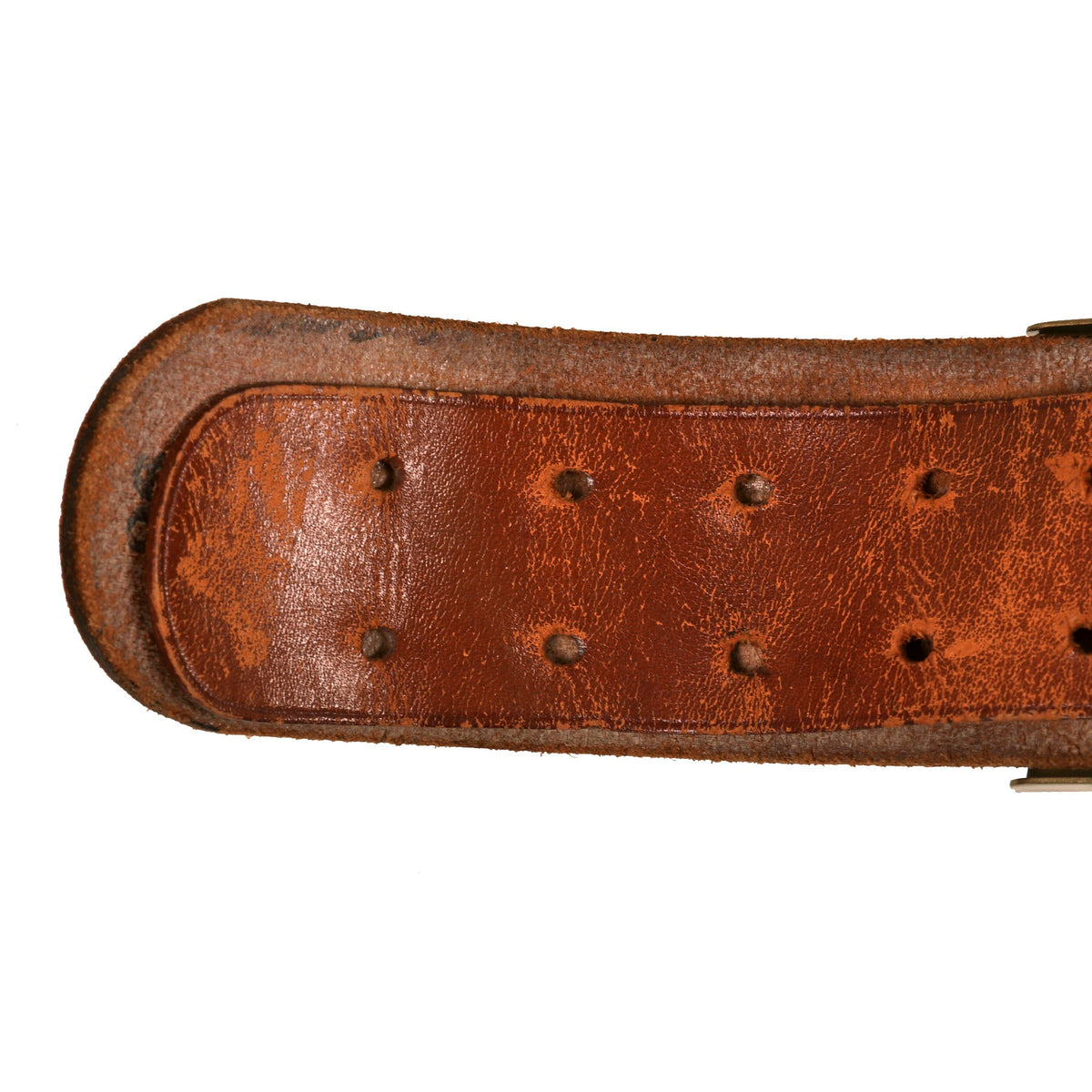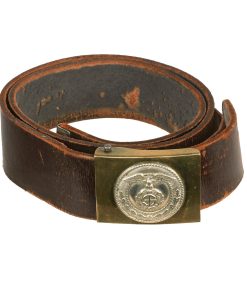Original German WWII Early SA EM/NCO Belt with Two Piece Brass & Nickel Buckle – Sturmabteilung Original Items
$ 350,00 $ 105,00
Original Item: Only One Available. This is a very nice WWII German Sturmabteilung (SA) EM/NCO’s Brass Belt Buckle (Koppelschloß) with correct leather belt. The front features an embossed insignia with the standard NSDAP Political eagle with downward sloping wings, and the early “Sunwheel” style Swas (hook cross). This example is a two piece example, with a stamped brass body, stamped catch, and soldered on front insignia. We checked the back, and there are no maker markings, but that is fairly typical for SA belts buckles.
The belt itself measures about 38” when fully extended. The leather does show wear to the finish, but there is no cracking or tears, and it is still soft and pliable. The back of the belt is felt-lined which was occasionally done. The end clip is the early war aluminum type. The belt is marked Size 96 on the back, for 96cm (37.8 inches).
Overall a great example of a hard to find WW2 German Belt.
The SA, “Sturmabteilung” (Storm-troops), were originally formed in August of 1921 as a protective guard unit for the political leaders of the fledgling NSDAP Party. As with the NSDAP, “Nationalsozialistische Deutsche Arbeiterpartei” (National-socialist German Worker’s-party), the SA was structured along para-military lines. Most of its recruits were from the ranks of the various “Freikorps” groups of the day, composed mainly of disgruntled ex-soldiers, and they were first utilized at a NSDAP party meeting in Munich in November of 1921.
The SA pattern box buckle was the first belt buckle to be introduced by the NSDAP, with its estimated introductory dates ranging between 1921 and 1923. On its introduction it was not fully standardized and came in at least five variations. The SA pattern buckle was originally worn by other NSDAP organizations including the SS, the NSKK, the NSBO, and political leaders
Unfortunately, the ambition and socialist leanings of the SA eventually came into conflict with the goals of the rest of the party, and in 1934 the group leadership was purged, and by 1936 the buckle was officially replaced, though many still wore them.
Fast Shipping with Professional Packaging
Thanks to our longstanding association with UPS FedEx DHL, and other major international carriers, we are able to provide a range of shipping options. Our warehouse staff is expertly trained and will wrap your products according to our exact and precise specifications. Prior to shipping, your goods will be thoroughly examined and securely secured. We ship to thousands clients each day across multiple countries. This shows how we're dedicated to be the largest retailer on the internet. Warehouses and distribution centres can be located throughout Europe as well as the USA.
Note: Orders with more than one item will be assigned a processing date depending on the item.
Before shipping before shipping, we'll conduct a thorough inspection of the items you have ordered. Today, the majority of orders will be delivered within 48 hours. The delivery time will be between 3-7 days.
Returns
The stock is dynamic and we cannot completely manage it because multiple stakeholders are involved, including our factory and warehouse. So the actual stock may alter at any time. It's possible that you may not receive your order once the order has been made.
Our policy is valid for a period of 30 days. If you don't receive the product within 30 days, we are not able to issue a refund or an exchange.
You can only return an item if it is unused and in the same state as the day you received it. You must have the item in its original packaging.
Related products
Uncategorized
Uncategorized
Uncategorized
Uncategorized
Armored Burgonet Helmet & Polearm from Scottish Castle Leith Hall Circa 1700 Original Items
Uncategorized
Uncategorized
Uncategorized
Uncategorized
Uncategorized
Uncategorized
Uncategorized
Armoured Fighting Vehicles of the World: AFVs of World War One (Hardcover Book) New Made Items
Uncategorized
Uncategorized
Australian WWII Owen MK1 Machine Carbine SMG Custom Fabricated Replica with Sling Original Items
Uncategorized
Uncategorized
Uncategorized
Uncategorized
Uncategorized
Uncategorized
